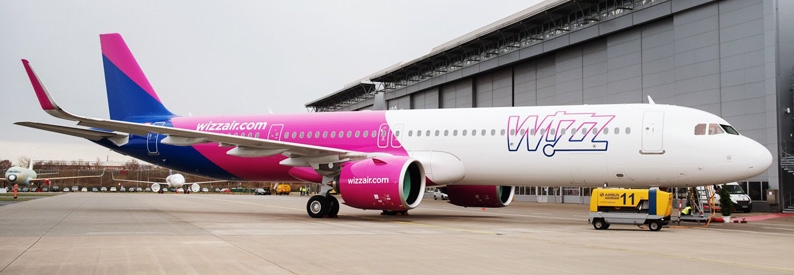Wizz Air Expands A321XLR Routes Across Europe and Middle East

Wizz Air, the ultra-low-cost carrier (ULCC), is preparing to expand its network with the introduction of the Airbus A321XLR, a long-range narrowbody aircraft set to revolutionize its operations. The airline’s CEO, József Váradi, announced on September 10 that Wizz Air plans to distribute its incoming fleet of 47 A321XLRs across Europe and the Middle East. The first delivery is expected in February or early March 2025.
The A321XLRs will be strategically positioned at six to eight operating bases, with three to five aircraft allocated to each location. According to Váradi, Wizz Air’s goal is to create operational hubs that can scale efficiently, ensuring a solid infrastructure to support the new fleet. “You need to think of operational back-up if something goes wrong,” Váradi emphasized, noting the importance of having enough aircraft at each base to manage unforeseen issues.
As Wizz Air gears up for the arrival of the A321XLRs, the airline faces the challenge of managing its current fleet. Currently, Wizz Air operates 233 aircraft, and an additional 30 to 35 new planes are expected to join over the next year. Váradi highlighted that there are “a lot of internal dynamics within the fleet structure,” with numbers influenced by new aircraft deliveries, the retention of older planes, and temporary grounding due to engine-related issues.
The first official route announcement for the A321XLR is a flight from Milan Malpensa to Abu Dhabi, but the debut route is expected to be London Gatwick to Jeddah, Saudi Arabia, with operations starting on March 31, 2025. The 4,700-nautical-mile range of the A321XLR opens up exciting new route possibilities for Wizz Air, with Western European cities to India emerging as a focus. However, Váradi acknowledged that negotiations with Indian authorities are ongoing, and no new routes to India have been confirmed yet.
The Indian market presents challenges for foreign carriers due to competitive pressures, particularly with the reemergence of the privatized Air India, which the Indian government is keen to protect. Securing landing slots at Indian airports has proven difficult, but Wizz Air continues to work towards gaining access to this lucrative market.
Despite the long-range capabilities of the A321XLR, transatlantic flights are not part of Wizz Air’s future plans. Váradi explained that the transatlantic market is already heavily saturated, particularly with British Airways operating 34 daily flights between the UK and North America, either directly or through codeshare agreements. Wizz Air sees little opportunity in this highly competitive space, preferring instead to focus on routes within Europe and the Middle East.
Wizz Air’s A321XLRs will be configured with 239 non-reclining seats in a single-class layout, offering a 28-inch seat pitch. Some industry observers have questioned whether passengers will tolerate this configuration on longer flights, especially on routes like London to Jeddah, which will take around 7 hours. However, Váradi remains confident, citing past success in pushing flight times to six hours, where passengers prioritized low costs over comfort.
Jeddah is becoming a key destination for Wizz Air, not only for religious tourism, with many travelers heading to Mecca, but also for the growing number of tourist resorts along Saudi Arabia’s northwest coast. Váradi described Jeddah as a “rising star” in Wizz Air’s network, with the airline already flying to the city from Budapest, Milan, and Rome. The new A321XLR routes will further expand the airline’s footprint across the region.
